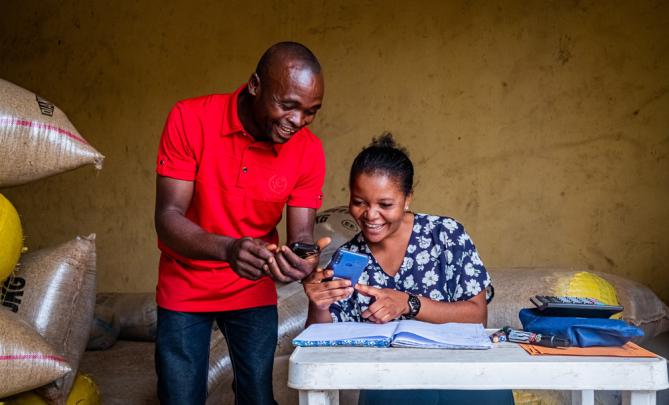Overview
Remittances
Around 800 million people in the world – or one in nine people– are recipients of remittance payments sent by their family members who have migrated for work. According to the United Nations, on average, migrant workers send between US$200 and $300 home every one or two months. This represents only 15 per cent of what they earn. The rest – 85 per cent – stays in the countries where they actually earn the money. IFAD estimates that 75% of remittances are used to cover essential things: put food on the table and cover medical expenses, school fees or housing expenses. The rest, about 25 per cent of remittances – representing over $100 billion per year – can be either saved or invested in asset building or activities that generate income. Around 50% of global remittances go to rural areas, where 75% of the world's poor and food insecure live. It is estimated that globally, the accumulated flows to rural areas over the next five years will reach $1 trillion. On average, remittances represent 60% of the recipients’ family income.
Migrants living in the European Union send on average €63 billion per year to their families in developing countries. The average cost of sending remittances to families in developing countries is 6.28%. The cost from the EU was at 6.9% and in Q1 2021, it is down to 5.86%, the steepest reduction (-15%) and the cheapest value since the approval of the SDGs in 2015.
EC strategy
- The overall objective is to promote faster, safer and cheaper transfer of remittances, including their productive use for sustainable development and well-being of migrant workers’ families.
- At global level, the EU is committed to support the global work on remittances to promote the positive impact on development and to reduce the transfer cost of remittances, supporting the effort to improve data collection and availability, and supporting migrants’ investment in their countries of origin.
- At country level, particularly in countries where remittances have a high potential to boost sustainable development, the EU is committed to:
- Improve data collection and availability.
- Mobilise migrants’ investment for sustainable development in countries of origin.
- Shift towards digital payment services, such as enabling environment for digital entrepreneurship.
Global policy documents
Agenda 2030 target 10 c) refers to remittances, in so far as to reduce the transfer cost: reduce the transaction costs of migrant remittances to less than 3 per cent and eliminate remittance corridors with costs higher than 5 per cent by 2030
Objective 20 of the Global Compact on Migration in 2018 aims at promoting faster, safer and cheaper transfer of remittances and foster financial inclusion of migrants by specific actions:
- Develop a road map to reduce the transaction costs of migrant remittances;
- Promote and support the United Nations International Day of Family Remittances and the International Fund for Agricultural Development Global Forum on Remittances;
- Harmonize remittance market regulations and increase the interoperability of remittance infrastructure;
- Establish conducive policy and regulatory frameworks that promote a competitive remittance market;
- Develop innovative technological solutions for remittance transfer, such as mobile payments or e-banking;
- Provide accessible information on remittance transfer costs;
- Develop programmes to promote investments from remittance in local development in countries of origin;
- Enable migrant women to access financial literacy training and formal remittance transfer systems;
- Provide access to and develop banking solutions and financial instruments for migrants.
Policy and Strategic Documents
The enclosed sector guidance was based on the following EC policy documents:
- The Action Plan adopted at the Valletta Summit on migration, which brought together European and African Heads of State in Valletta (Malta) on 11 and 12 November 2015, included the following provision:
- By 2030, reduce to less than 3 percent the transaction costs of migrant remittances and eliminate remittance corridors with costs higher than 5 percent. In addition, identify corridors for remittances transfers where the partners commit to substantially reduce the costs by 2020, from Europe to Africa and within Africa, in compliance with existing national legislation. Explore, identify and promote innovative financial instruments to channel remittances for development purposes and to increase the volume of transfers through the formal remittance channels.
- In 2017, the EU Consensus on development stated that the EU and Member States will work with private sector partners and others to lower the cost of remittances and promote faster, cheaper and safer transfers in both source and recipient countries, thus harnessing their potential for development (para. 41).
- The European Commission’s Communication “Towards a comprehensive Strategy with Africa”, adopted in April 2020, states that “Digital services can also increase access to transaction accounts and digital finance solutions remittances (…)”. the New Pact on Migration and Asylum of September 2020 refers to the importance of better exploiting the potential of remittances to help economic development.
- In June 2020, the EU approved the Revised Cross-Border Payment Regulation binding operators to show the total costs of remittances, making the internal cross-border payments more transparent.
- The EU Retail Payments Strategy, adopted on 24 September 2020, has a section on international remittances, with some recommendations to facilitate cross-border flows, and also benefit remittances:
- to support the remittance sector, subject to commitments by remittance service providers to progressively reduce the cost of remittance services over time;
- to support SEPA-like initiatives in regional groupings of low and middle income countries, and in relevant cases the possibility for Third countries to join SEPA;
- to promote the access to payment accounts in low and middle-income countries, which will also facilitate the digitalisation of remittances.
